It seems we can’t find what you’re looking for. Perhaps searching can help.
Sign Up for newsletter!
Subscribe to get the latest eBook!
Hotline






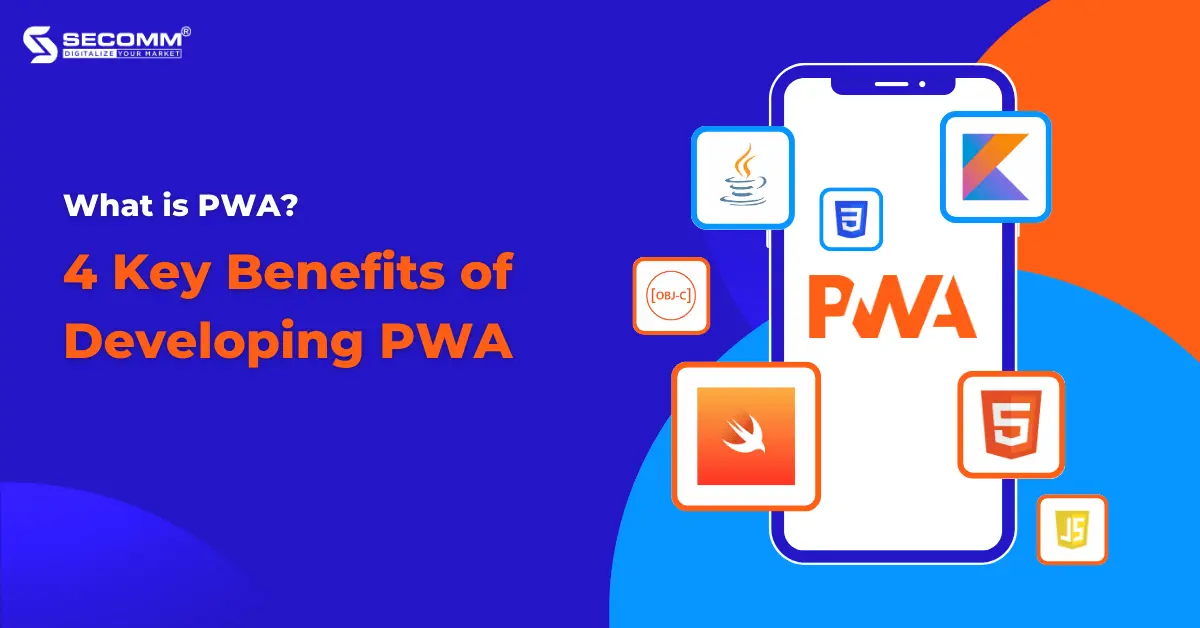
Amidst the fierce competition in eCommerce, businesses of all sizes are striving to find breakthrough solutions to enhance customer experience and boost engagement. Among the numerous options available, PWA (Progress Web App) is considered a promising solution that can change the way users interact with an eCommerce website. Although PWA has been in the market for a while, its popularity has only recently surged in recent years.
A Progressive Web App (PWA) is a type of web application built using standard web technologies such as HTML, CSS, and JavaScript, but can provide users with a similar experience and features to a native app, including push notifications, offline availability, etc.
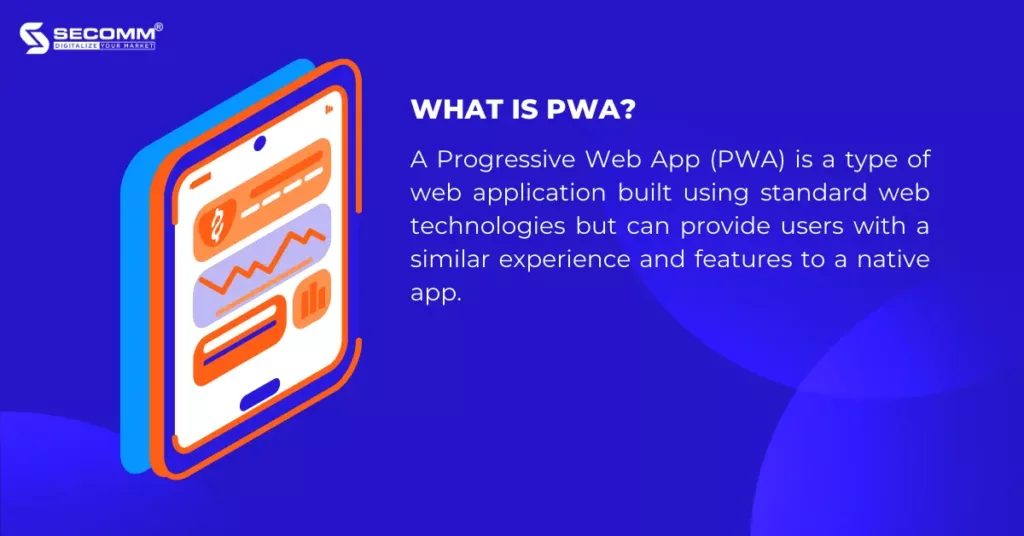
Native apps, what do they actually mean? They are software applications built on a specific programming language for a particular platform or operating system such as iOS or Android.
Because of the differences between the two types of applications, businesses usually rely on their needs and resources to make a suitable choice.
Related Readings: Native App vs Hybrid App: Key Differences
Native apps are typically built using a programming language specific to each particular operating system, such as Objective-C/Swift for iOS and Java/Kotlin for Android. Meaning that developers must have a certain level of experience and expertise to write and develop apps that are suitable for each operating system. Additionally, maintaining and updating app versions must be done regularly, which can be time-consuming and costly.
On the other hand, when developing a progressive web app, developers can use a shared codebase to develop apps for all platforms, making development and maintenance faster and easier than with a native app.
To use Native apps, users need to access app stores such as the Apple’s App Store or Google Play to download and install them, while with progressive web app, users can install them directly from their web browser onto their device without going through an app store.
Although PWA can provide good performance and user experience, it is still generally not as good as native apps. Native apps offer a more seamless and richer user experience than progressive web app because they are designed specifically for a particular platform and can maximize the use of hardware and software features of the device.
Summary:
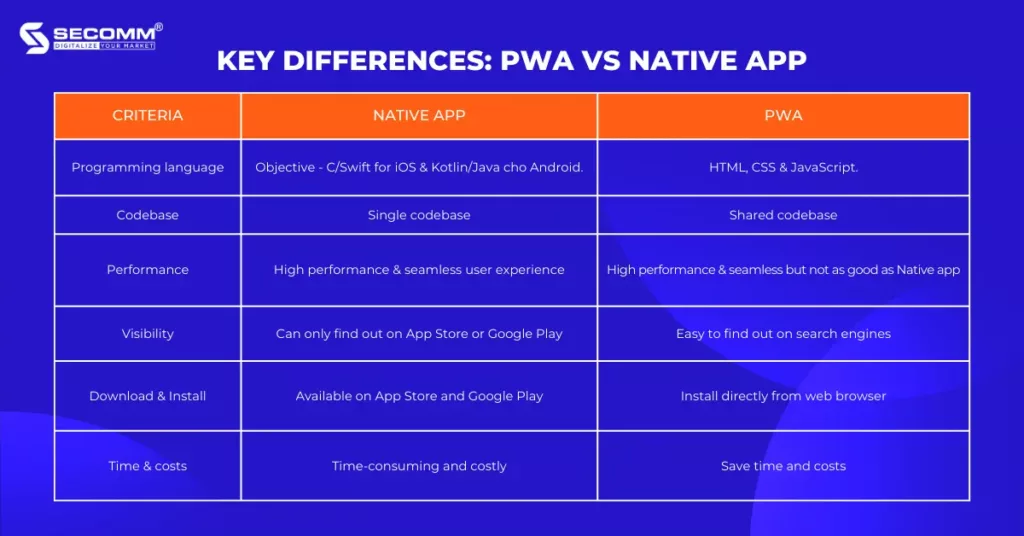
Currently, PWA is becoming very popular and is being chosen by many businesses everywhere in the world for the following benefits:
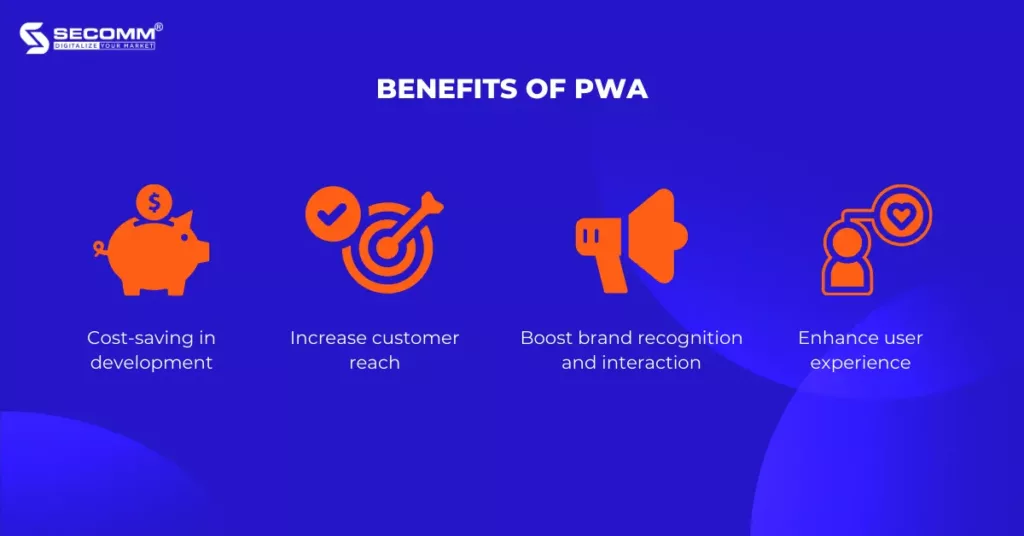
This is the biggest advantage and the main reason why many businesses are turning to PWA. The cost to build and maintain PWA is relatively low compared to native apps because it doesn’t require developing separately for each platform. Moreover, after installation, PWA functions like a native app with no compromise on performance and user experience. Therefore, for businesses with budget constraints, PWA is a worthwhile option to consider in order to save costs and time to launch the product.
Since PWA is designed to work efficiently on various devices and platforms such as smartphones, tablets, desktops, laptops, etc., users can access the app through a web browser and install it directly onto the home screen without downloading it from the app store. Therefore, PWA can reach a wider pool of potential customers, allowing businesses to expand their customer reach.
The “add-to-home-screen” feature of PWA enables customers to easily add the app to their device home screen directly from the web browser. In reality, customers only click on this feature when they browse and find the app interesting and useful for them. Once the app has been added to the home screen, users will easily see and remember the brand. This way, businesses can use targeted marketing methods to encourage customer interaction.
Similar to native apps, PWA can also provide a quality user experience with fast page loading time, smooth navigation, and stable performance. In addition, it is capable of quickly responding and operating well on many devices with various screen sizes, helping users view content and products on any preferred device. PWA is developed based on web technologies, which means businesses can track and analyze user behavior in real-time and make data-driven decisions to enhance user experience.
Lancôme, the leading high-end cosmetics brand in the world, launched a PWA in 2017 to enhance user experience and improve mobile web interaction. The Lancôme PWA provides features such as an icon on the home screen, push notifications, offline mode, and more. This allows customers to quickly access Lancôme’s website with just one touch, and the company can use push notifications to inform customers about the latest products, promotions, and special offers. In addition, the offline mode allows customers to continue browsing Lancôme’s website even without an internet connection.

The famous online music platform – Spotify, developed and launched their own PWA in 2018 to provide a fast, seamless, and engaging user experience for their customers. Similar to Lancôme, Spotify also offers prominent features including offline music and podcast playback, which helps to ensure an uninterrupted user experience. The Spotify PWA has received positive reviews and feedback from users for many years.
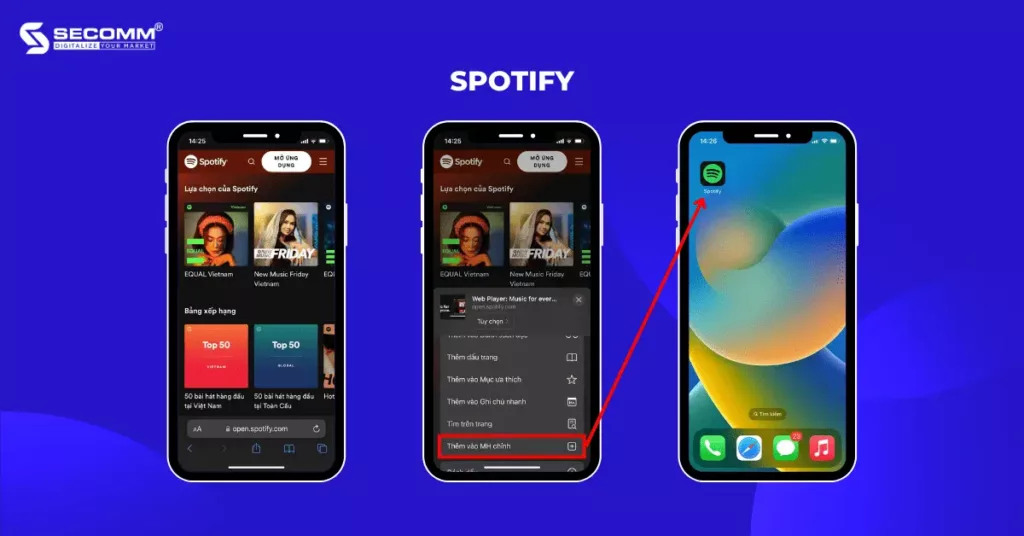
Native app of Tinder has been very effective on many different operating systems and is particularly loved by users. However, with the desire to expand and conquer new markets as well as protect its position as a leading online dating platform, Tinder has built a PWA.
The page loading time of Tinder PWA has been reduced to 4.69 seconds compared to 11.9 seconds before, which significantly increases interaction and surpasses Tinder native app in terms of the number of swipes, profile edits, and time spent per user.
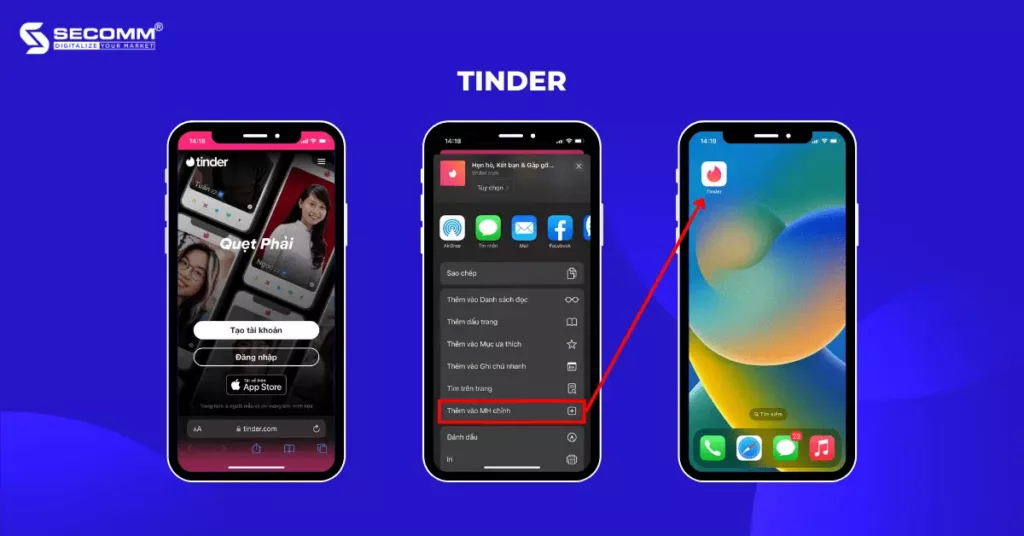
In addition, there are many famous companies in the world that have implemented PWA: Facebook, Instagram, Twitter, TikTok, Uber, Pinterest, Starbucks, Aliexpress, etc.
With years of experience implementing eCommerce solutions for numerous clients in various countries, SECOMM understands the importance of developing PWA to cope with the competition in the billion-dollar technology industry as well as the challenges that each business faces when building and developing PWA.
Contact SECOMM now for a free consultation!
 2
2
 10,120
10,120
 0
0
 1
1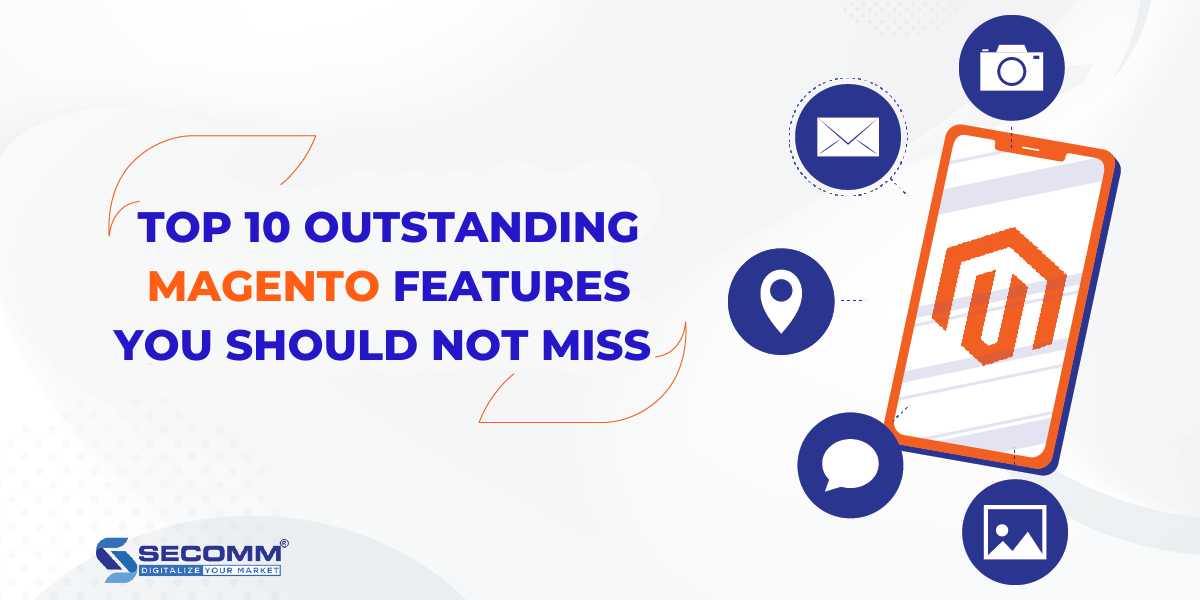
Since its inception, Magento has maintained its distinct position in the eCommerce development community. One of the primary reasons for this is that Magento has a diverse, highly applicable feature system compatible with all business models (B2B, B2C, B2B2C, D2C).
SECOMM will introduce some “cool” Magento features for businesses to consider
The Multi-Brand Solution is a multi-language, multi-currency, and multi-store solution that helps businesses unify all content and products on a single “screen.” Businesses with various brands, stores, or business models can set up multiple pricing structures, display a wide range of product types, and customize payment methods for any audience ( B2B, B2C, B2B2C, D2C).
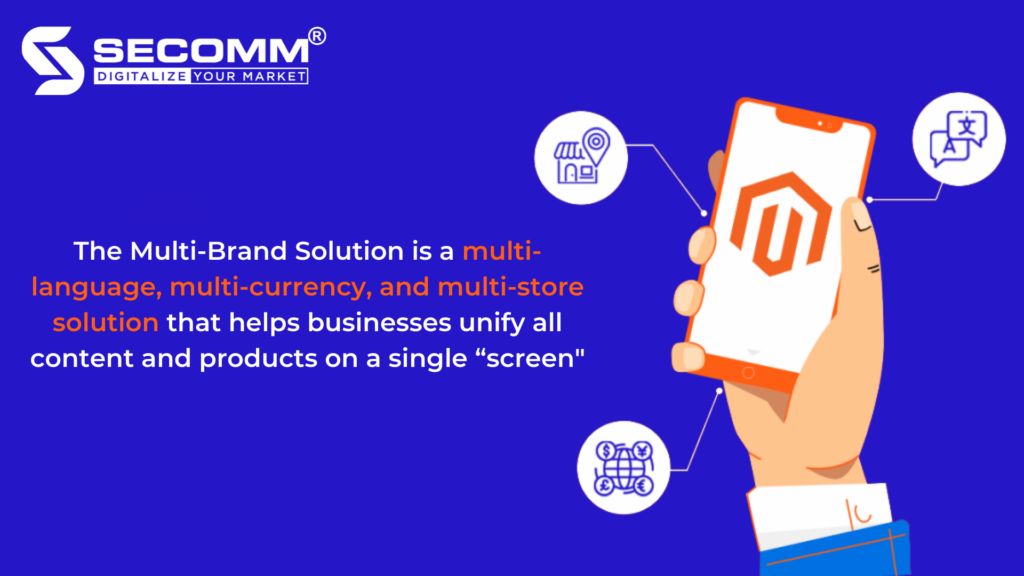
This function assists businesses in increasing sales by utilizing all content to create eye-catching websites to maximize customer information. As a result, targeting different customers with product recommendations and promotions is possible. Simultaneously, the adaptability enables businesses to personalize the purchasing experience through customized categories and pricing.
MSI is a prominent feature of Magento 2 (starting with version 2.3.0) that allows businesses to easily manage products from multiple stores, significantly improving inventory management regardless of customer location, warehouse, or sales channel.

This feature enables businesses, particularly dropshipping businesses, to ship one order containing multiple products from multiple warehouses while ensuring on-time delivery to customers.
Magento’s headless Commerce is an eCommerce architecture that separates the frontend (which represents the user interface) from the backend (which means the eCommerce functionality). The front and backend are linked together by an API, allowing businesses to easily customize and update without interfering with the user interface or CMS pages.
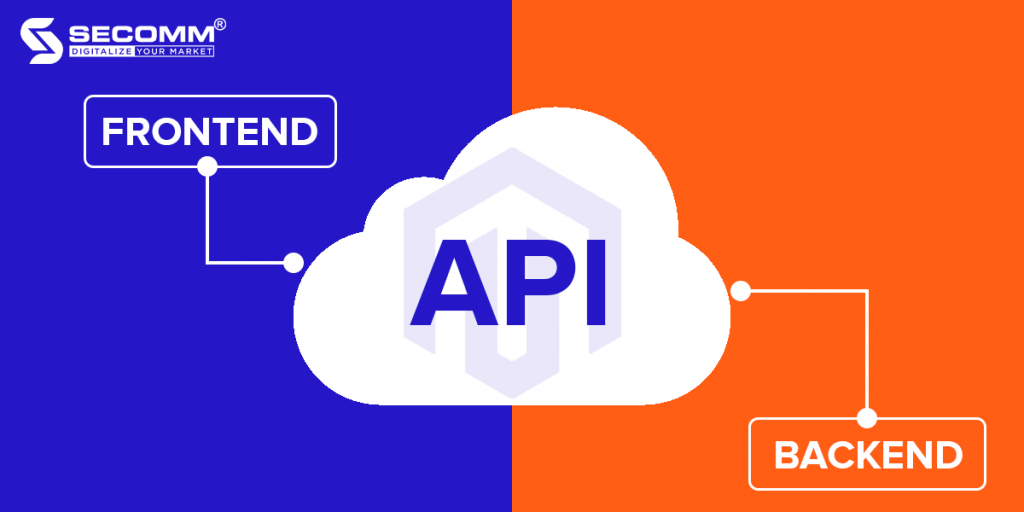
Thanks to the applicability of Headless Commerce, Magento websites benefit from faster page load times and personalized user experiences at a lower long-term cost.
Magento allows you to track and measure eCommerce system performance using built-in tools like Google Analytics, which tracks and reports traffic, audience, purchasing process, and purchasing behavior.
Use Google Tag Manager to quickly update website metrics and related tags to increase personalization and reach the right goals for the following marketing campaigns.
Use Facebook Pixels to measure ad performance and capture actions taken on the website.
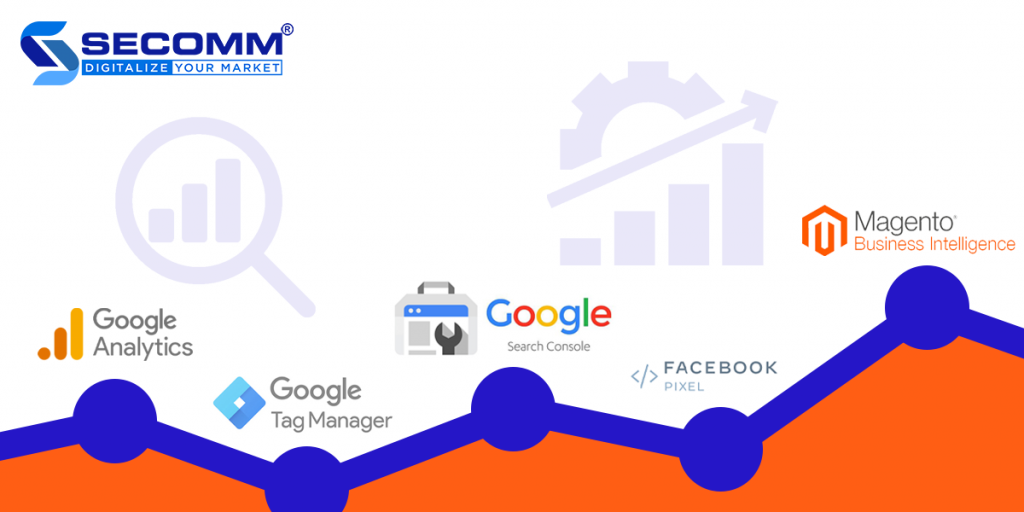
Furthermore, Magento supports Business Intelligence (BI) analysis. Magento BI is a cloud-based platform that allows you to consolidate and manage data sources, create data models, and create charts and reports from a single screen. Sending out periodic reports also helps to control information sharing.
Specially designed for B2B customers, supporting various functions like:
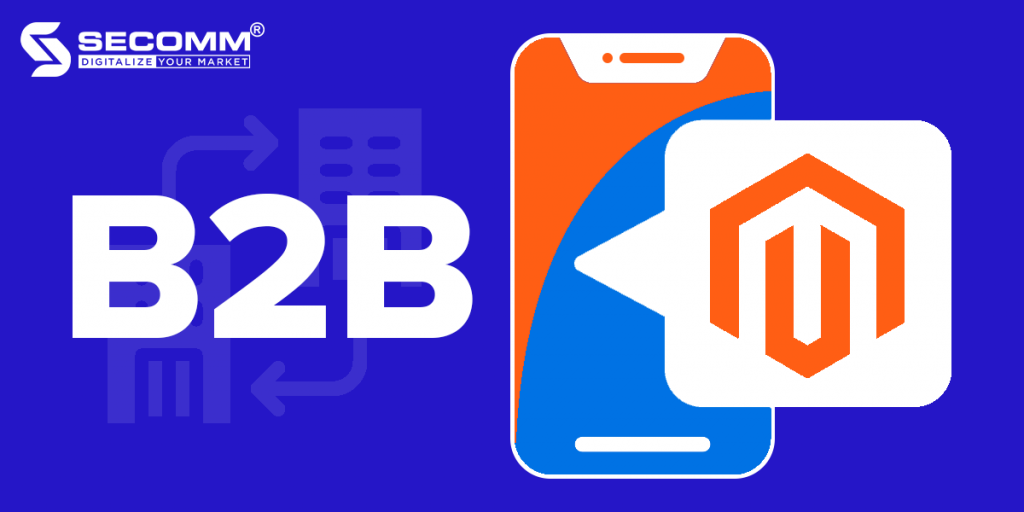
All of these features assist businesses in managing user accounts via the customer portal, allowing them to quickly set up multiple levels of buyers with specific roles and benefits.
In addition, companies can track quotes and orders, define purchasing rules, and manage credit online simultaneously. Since then, business and management in the B2B model have become more efficient and faster.
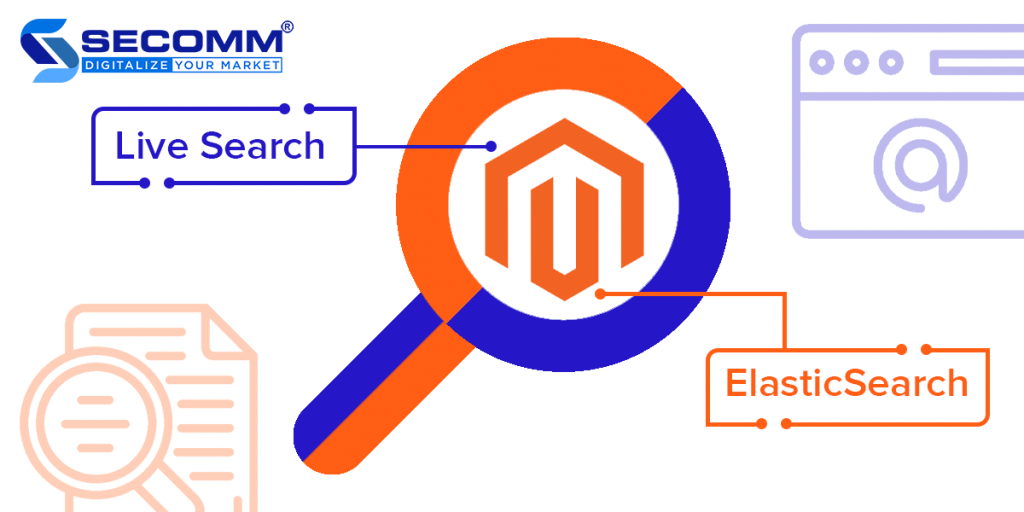
Live Search combines artificial intelligence (AI) and machine learning (Adobe Sensei) to provide fast search results and personalized product recommendations based on customer behavior, trends, characteristics, and other data.
ElasticSearch is an open-source distribution that supports enterprise-level search engines for searching data on the server. This function aims to perform real-time analysis and data source mining (MS SQL, MySQL, PostgreSQL, etc) to optimize highly for fast language-based searches.
Simultaneously, overcome the difficulties by hiding all other complex operations by providing API access.
This function includes a variety of actions, such as the ability to drag and drop content on the website to provide the best user experience, preview how the content will appear on the user interface, and modify forms to enter and customize content.
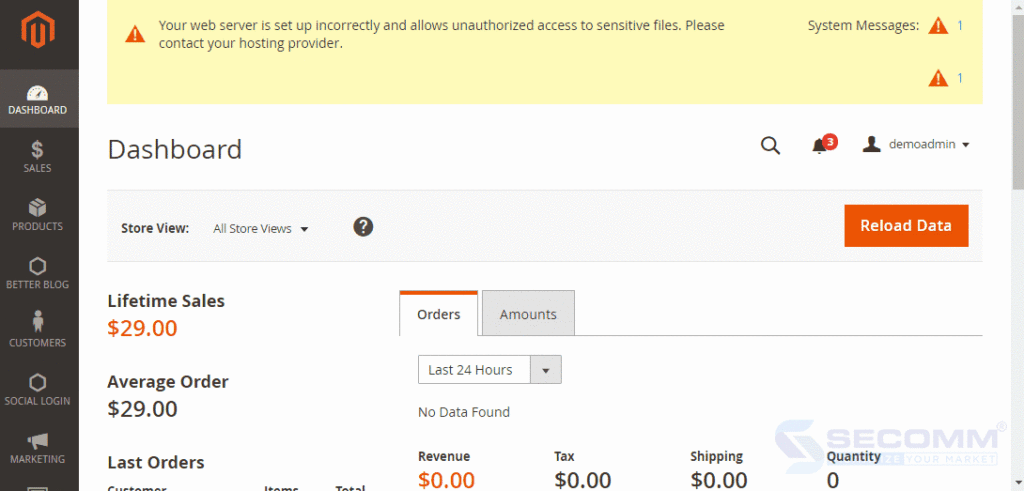
Initially, Magento’s functionality only supported the Magento Commerce version (Magento Enterprise Edition). Still, since Magento 2, the developer has supported the Magento Open Source version, allowing businesses to create unlimited CMS content pages.
Magento’s high security has long been a distinguishing feature that makes it the preferred platform for businesses.

Using a periodic security scanning tool to quickly identify problems and update patches and notifications, propose security solutions to deal with arising errors, and effectively improve and optimize website security.
To increase the level of security for administrator accounts, use advanced passwords. The administrator password should be at least seven characters long and contain letters, numbers, and special symbols. Password complexity may be increased with lower case/case sensitivity, or re-login may be required after a certain length of a login session, depending on additional adjustments.
CAPTCHA security can protect both administrators and website visitors. In addition, using CAPTCHA aids the system in preventing bot spam and malicious code from entering the system illegally.
The 2FA (Two-Factor Authentication) function provides additional security for system user accounts. To effectively limit threats of unauthorized access and attack on user accounts, customers must authenticate with an OTP security code sent to their phone number after logging in.
PWA combines a website and a native app (for Android and iOS) on tablets and smartphones. Therefore, PWA enables your website to function and interact with mobile users in the same way that a native app would.

However, depending on the user’s needs, this website can be converted into a mobile application right on the device. Users can download the app to their phones when they visit the website. If the user agrees, they can open and browse the website in the same way they would an app on their phone.
SEO is another fantastic feature of Magento, in addition to optimizing website content, this feature also searches for indexed pages and assesses the SEO quality of each page. From there, the business website can use the robots.txt file to prevent the crawling of low-value parameters and consider only indexing pages with high search potential to improve rankings.
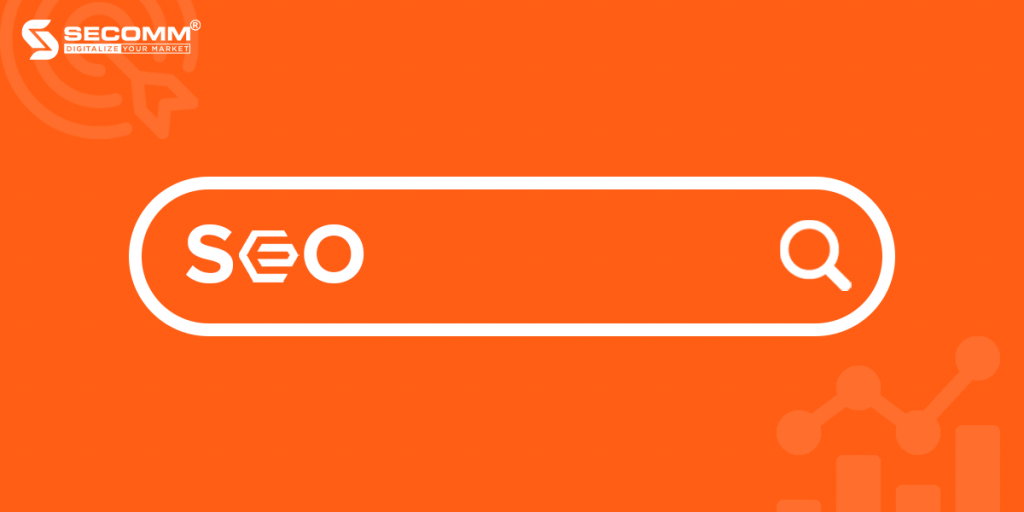
In addition, Magento has many other features such as cross-device compatibility, quick purchase and quick checkout, and so on. However, the development cost of an e-commerce website with such complex features is often very high, ranging from $5,000 to $100,000.Businesses should think about their e-commerce strategy when developing a unified sub-feature system.
With extensive experience developing many complex e-commerce systems on Magento, SECOMM understands the challenges that businesses face when selecting a platform and implementing E-commerce.
Contact SECOMM for a free consultation on comprehensive e-commerce system development solutions!
 2
2
 6,316
6,316
 1
1
 1
1Subscribe to get the latest eBook!
Hotline